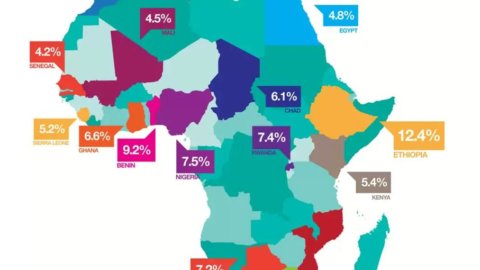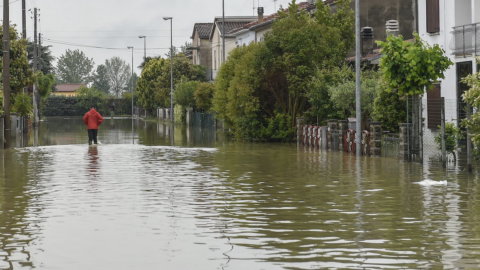According to forecasts provided by the World Bank, the economic growth of sub-Saharan countries should exceed the global average over the next three years (2,4% this year), thanks to the growing number of commodities and investments, leading the region's output growth to exceed the 5% threshold. But this does not guarantee that local governments do all they can to reduce the degree of poverty affecting the majority of the population, despite the World Bank underlining the progress made in the last decade with a certain optimism (the data provided indicate that the percentage of the population living on less than 1,25 dollars a day has gone from 58% to 48,5% in the years 1996-2010). But, at the same time, it doesn't hide that the fight against poverty is limited by growing wage inequality and excessive dependence on the export of mineral resources, thus hiding an underlying weakness based on theinsufficient product diversification. Progress in countries rich in raw materials such as Equatorial Guinea, Nigeria and Gabon has, in fact, been slower when compared to other markets with fewer resources.
In this scenario, the World Bank identifies infrastructure development as a key factor in fueling the speed of economic growth, in particular looking at oil and gas extraction in East Africa and coal in Mozambique. At the same time, the need to continue attracting productive investment in the mining sector is indicated in Ghana, Guinea, Liberia, Nigeria and Sierra Leone.
African countries could assume a first-rate partner role in world economic dynamics, either as outlet markets given the atrophying of European demand, and as commercial engines, given the high birth rate and natural resources. It is more necessary than ever, then, one awareness of the political, cultural and structural factors that inhibit any type of social and economic performance: see the case of the workers' unrest in South Africa, the related violent repression and riots in the Central African Republic, Mali and Togo. Without at the same time looking away from the crisis in the Eurozone and the drop in demand for commodities in China which play a fundamental role in global economic and trade trends. In a world where economic interdependence is a fact and where circular and cumulative processes dominate, the resolution of cultural and institutional problems can only bring a benefit to development, i.e. the degree of quality of life of all individuals and not of small power groups. But on the condition that there is truly the will to do so and not to pursue the most blind opportunism, whose limits and dangers have already been laid bare by the recent financial and debt crisis, as the most powerful boomerang effect of the last thirty years .





